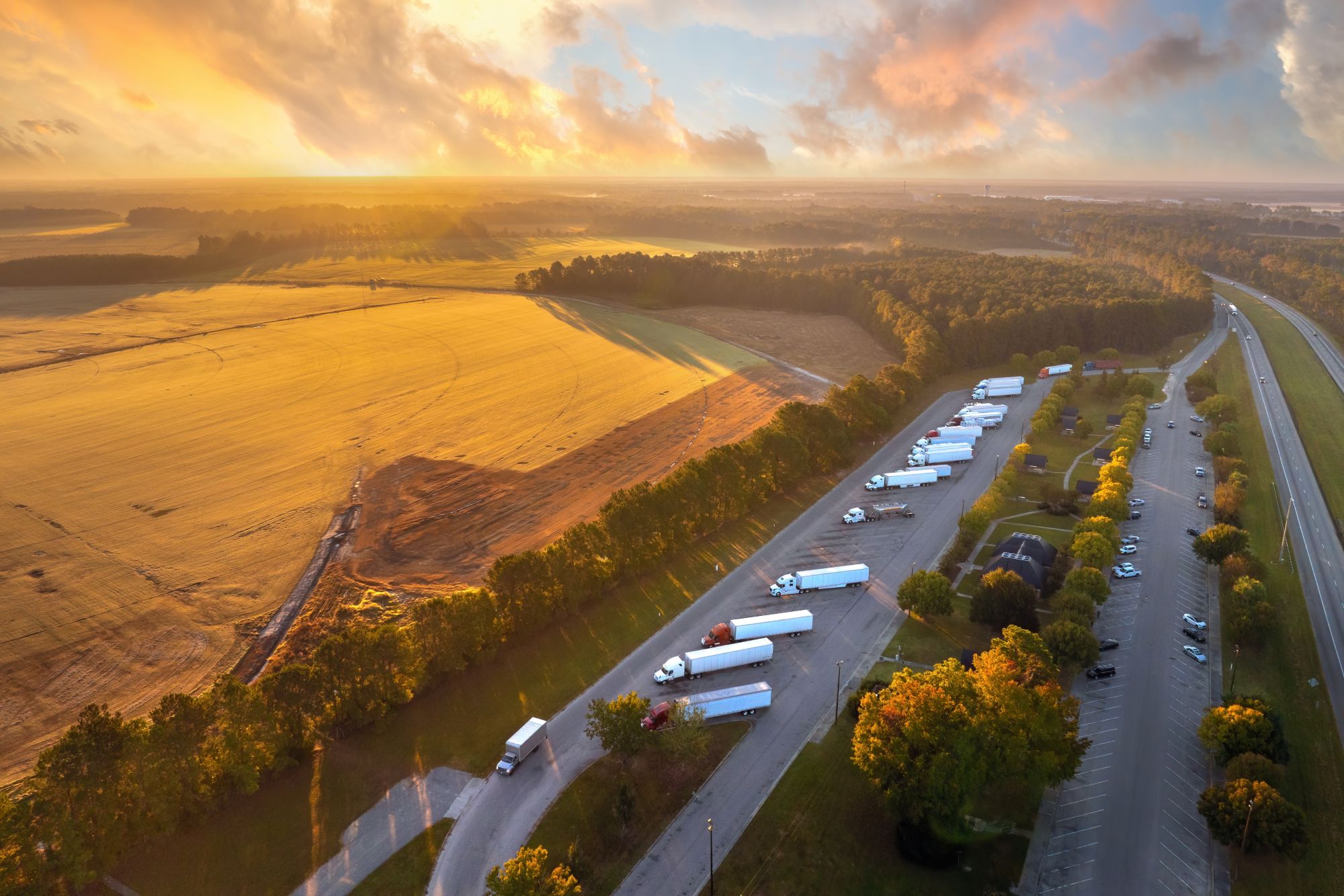
Guest
Kako postati voznik tovornjaka
Ustvarjeno: 26. 09. 2025
•
Posodobljeno: 26. 09. 2025
Povsod po Evropi povpraševanje po poklicnih voznikih tovornjakov še nikoli ni bilo tako veliko. V Združenem kraljestvu Združenje za cestni prevoz ocenjuje, da bo v naslednjih petih letih potrebnih 200 000 novih voznikov tovornjakov, da bi zagotovili delovanje dobavnih verig. Enako je v večini Evrope. Po podatkih International Road Transport Union naj bi bilo leta 2024 v Evropi 426.000 nezasedenih delovnih mest za voznike.
To pa je priložnost. Kot smo že ugotavljali (https://snapacc.com/newsroom/is-logistics-a-new-alternative-to-further-education-for-school-leavers/), panoga tovornega prometa ponuja možnost stalnega dela za dijake, ki razmišljajo o alternativi univerzi, in odrasle, ki se želijo prekvalificirati. Če postanete voznik tovornjaka, si lahko zagotovite zanesljiv zaslužek in strukturirano kariero.
Mnogi se sprašujejo: kako postati voznik tovornjaka? Odgovor ni odvisen le od usposabljanja in licenc, temveč tudi od razumevanja, kaj pomeni opravljati poklic, ki skrbi za gibanje evropskega gospodarstva.
Kdo lahko postane voznik tovornjaka?
Ena od glavnih privlačnosti vozniške kariere je njena dostopnost. Za začetek ne potrebujete univerzitetne izobrazbe ali dolgoletnega strokovnega usposabljanja; pred pridobivanjem poklicnih kvalifikacij je potrebno le standardno vozniško dovoljenje (kategorija B).
Najnižja starost za usposabljanje je 18 let tako v Združenem kraljestvu kot v EU, kar pomeni, da lahko dijaki neposredno preidejo z avtomobilskega dovoljenja na poklicno usposabljanje za voznike težkih tovornih vozil. Kljub temu je za mnoga podjetja bolje, da so mednarodni vozniki stari vsaj 21 let, saj je prevoz na dolge razdalje povezan z večjo odgovornostjo.
Pomembna je tudi zdravstvena sposobnost. Vsak kandidat mora opraviti zdravniški pregled, preden lahko pridobi vozniško dovoljenje za tovorna vozila. V Združenem kraljestvu to vključuje vrsto testov, vključno s pregledom vida, merjenjem krvnega tlaka in preverjanjem bolezni, kot so epilepsija, bolezni srca ali apnoja med spanjem.
V evropskih državah veljajo enaki zdravstveni standardi za vso EU, pri čemer redno obnavljanje zagotavlja, da vozniki ostanejo zdravi ves čas svoje poklicne poti.
Koliko zasluži voznik tovornjaka?
Veliko ljudi, ki razmišljajo o poklicni vožnji, se sprašuje: koliko zaslužijo vozniki tovornjakov?
Odgovor se razlikuje glede na kraj, izkušnje in vrsto dela, vendar v Evropi ta poklic ponuja konkurenčno plačilo v primerjavi z drugimi začetnimi delovnimi mesti.
● Novi voznik v Združenem kraljestvu običajno začne s približno 27.000 funti na leto. Tisti, ki se odločijo za delo na dolgih razdaljah, zlasti na mednarodnih progah, lahko dobijo 45 000 funtov, včasih tudi več, če prevažajo specializirane ali nevarne tovore. those handling special loads, hazardous goods or operating across borders.
● V Španiji so plače običajno nižje kot v Združenem kraljestvu, običajno okoli 36.600 EUR, čeprav lahko velika logistična podjetja v večjih mestih ponujajo več.
● Poljska je bilo v zadnjih letih veliko povpraševanje po voznikih, vendar so plače še vedno skromne in v povprečju znašajo približno 92.400 PLN (približno 21.690 EUR).
● Romunija je na spodnjem delu lestvice, saj vozniki običajno zaslužijo 80.550 RON (16.000 EUR), čeprav lahko mednarodne pogodbe o prevozu občutno povečajo plačo.
Seveda pa plača ni vse. Številna podjetja ponujajo plačilo za nadurno delo, dodatek za malico ali bonuse za doseganje ciljev dostave. Ker se povpraševanje po voznikih ne zmanjšuje, to delo prinaša tudi raven varnosti, ki se ji lahko kosa le malo drugih začetnih poklicev.
Katero vozniško dovoljenje za tovornjak potrebujem?
Preden lahko sedete za volan tovornjaka, potrebujete ustrezno vozniško dovoljenje. V Združenem kraljestvu to pomeni, da morate pridobiti več kot standardno vozniško dovoljenje za osebni avtomobil, ki je uradno znano kot dovoljenje za velika tovorna vozila (LGV) ali težka tovorna vozila (HGV). Izraza se pogosto uporabljata izmenično, vendar oba zajemata iste kategorije poklicne vožnje.
Nekateri začnejo z vozniškim dovoljenjem kategorije C1, ki velja za srednje velika vozila med 3,5 in 7,5 tone, ki se pogosto uporabljajo za manjše dostavne tovornjake.
Vendar pa večina ambicioznih voznikov tovornjakov pridobi neposredno vozniško dovoljenje kategorije C, ki se včasih imenuje vozniško dovoljenje za tovorna vozila razreda 2. To vam omogoča vožnjo togih vozil, težjih od 7,5 tone. Za tiste, ki želijo napredovati do zgibnih tovornjakov - večjih vozil, ki se običajno uporabljajo na dolgih razdaljah in mednarodnih poteh - je potrebno vozniško dovoljenje kategorije CE (razred 1).
Poleg teh kvalifikacij je v Združenem kraljestvu in EU zakonsko zahtevano tudi potrdilo o poklicni usposobljenosti voznikov (CPC). Ta certifikat vključuje kombinacijo začetnega usposabljanja in rednih osveževanj, ki so namenjena sprotnemu posodabljanju znanja voznikov na področju varnosti, predpisov in cestnih spretnosti.
Ta sistem odraža vseevropski okvir za izdajanje dovoljenj. Glavne razlike med državami so v ponudnikih usposabljanja, stroških in ponekod tudi v razpoložljivosti izpitnih mest.

Kako pridobiti vozniško dovoljenje za tovorna vozila
Pridobitev dovoljenja za tovorna vozila je prvi korak k poklicni vožnji. V Združenem kraljestvu lahko postopek začnete, ko imate standardno vozniško dovoljenje kategorije B. Nato zaprosite za začasno dovoljenje za tovornjake, ki vam omogoča, da se začnete usposabljati za vožnjo velikih tovornih vozil.
Usposabljanje združuje teoretične in praktične elemente: predavanja v učilnici o varnosti v cestnem prometu in predpisih, ki jim sledi nadzorovana vožnja s težkimi vozili. Kandidati morajo opraviti tudi module za pridobitev spričevala o strokovni usposobljenosti voznikov (CPC), ki zagotavlja, da so vozniki usposobljeni ne le za varno upravljanje vozil, temveč tudi za obvladovanje vsakodnevnih zahtev tovornega prometa.
Koliko stane, če želite postati voznik tovornjaka?
Eno najpogostejših vprašanj, ki jih zastavljajo vsi, ki razmišljajo o tem poklicu, je, koliko stane usposabljanje za voznika tovornjaka. V Združenem kraljestvu se cene razlikujejo glede na ponudnika, lokacijo in glede na to, ali se usposabljate za vozniško dovoljenje kategorije C ali naprednejše kategorije CE. V povprečju lahko novi vozniki pričakujejo, da bodo za zdravstvene preglede, pristojbine za začasno dovoljenje, teoretične izpite, praktično usposabljanje, module CPC in končni vozniški izpit porabili od 2 000 do 3 500 funtov. Nekatera podjetja, zlasti večja logistična podjetja, ponujajo programe subvencioniranja ali popolnega financiranja usposabljanja v zameno za delovno obveznost, s čimer je ta pot dostopnejša.
Tudi drugod po Evropi se številke ne razlikujejo preveč. V Španiji usposabljanje običajno stane od 2.000 do 3.000 EUR za celotno usposabljanje in certificiranje. Na Poljskem je ta številka nižja in znaša v povprečju od 1 500 do 2 500 EUR. V Romuniji so stroški usposabljanja med najnižjimi v Evropi, saj številni kandidati za pridobitev kvalifikacij plačajo približno 1.000 do 1.800 EUR, čeprav začetne plače običajno odražajo to nižjo vstopno oviro.
Kako dolgo traja, da postanete voznik tovornjaka?
Čas, potreben za pridobitev kvalifikacij za voznika tovornjaka, je odvisen od kraja usposabljanja, vrste vozniškega dovoljenja, ki ga želite pridobiti, in od tega, kako hitro si lahko zagotovite datum izpita. V Združenem kraljestvu večina ljudi opravi usposabljanje in izpite v dveh do štirih mesecih. Na nekaterih intenzivnih tečajih je postopek strnjen v nekaj tednih, čeprav številni vozniki menijo, da jim razporeditev lekcij pomaga bolje usvojiti znanje in spretnosti.
V Španiji in na Poljskem je postopek podoben, čeprav se lahko čakalne vrste za izpitna mesta podaljšajo. Na Poljskem je zaradi velikega povpraševanja po poklicnih voznikih prišlo do ozkih grl v centrih za usposabljanje, kar pomeni, da nekateri kandidati na praktični izpit čakajo več mesecev. Romunija ima eno najhitrejših poti, saj se usposabljanje in izpiti pogosto končajo v osmih do dvanajstih tednih.
Učenje se ne konča niti po pridobitvi vozniškega dovoljenja. Vsak poklicni voznik mora vsakih pet let opraviti 35 ur usposabljanja CPC, s čimer posodablja svoje znanje in se pripravlja na najnovejše predpise in varnostne standarde.
Kako dolgo lahko voznik tovornjaka vozi?
Ko pridobite kvalifikacije, je delo strogo omejeno na čas, ki ga lahko preživite za volanom. Te omejitve so namenjene zaščiti voznikov in drugih udeležencev v prometu z zmanjšanjem utrujenosti.
V Združenem kraljestvu in EU veljajo enaka pravila. Vozniki lahko vsak dan za volanom preživijo največ devet ur, dvakrat na teden pa se ta čas lahko podaljša na deset ur. Tedenska omejitev je 56 ur vožnje, pri čemer v dveh zaporednih tednih ne sme biti več kot 90 ur.
Po 4,5 urah vožnje mora voznik narediti najmanj 45-minutni odmor. Prav tako je upravičen do dnevnega in tedenskega počitka za okrevanje pred vrnitvijo na delo.
Ta pravila se strogo nadzorujejo, saj so v vozila vgrajeni tahografi, ki beležijo ure in zagotavljajo skladnost. Za tiste, ki delajo na dolgih progah, kot so španski vozniki na Iberskem polotoku ali poljski prevozniki, ki prevažajo blago čez vzhodne meje EU, te omejitve določajo ritem dela. Določajo, kdaj in kje se vozniki ustavijo, zato je dostop do varnih in varovanih počivališč pomemben del delovnega dne.
Začetek dela voznika tovornjaka
Za voznika tovornjaka ni pomembno le opraviti teste. Gre za vstop v vlogo, ki prinaša resnično odgovornost, a tudi dolgoročne priložnosti. Z ustreznim vozniškim dovoljenjem, ustreznim usposabljanjem in odločenostjo, da se lotite življenja na cesti, je to poklic, ki lahko zagotavlja stabilnost in napredovanje.
V podjetju SNAP vemo, kakšna so ta potovanja. Zato sodelujemo z voznimi parki in vozniki po vsej Evropi, da bi jih naredili varnejše, preprostejše in udobnejše - od varnih parkirišč in boljših socialnih ustanov do pametnih digitalnih orodij, ki prihranijo čas in stres. Ne glede na to, ali šele začenjate ali vozite že vrsto let, smo tu, da vas podpremo na vsakem kilometru poti.
Še danes prenesite aplikacijo intruck in poiščite zanesljiva parkirišča, objekte in storitve, ne glede na to, kam vas vodi pot.



